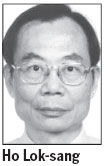Making HK the most livable city for not so well-off people
Updated: 2012-07-24 06:28
By Ho Lok Sang(HK Edition)
|
|||||||||
Hong Kong was rated the world's most-livable city by the Economist. This is at the same time a surprise and an embarrassment.
Most Hong Kong people have difficulty grasping the idea that our city is the world's most livable. Typically, a Hong Kong household has to put up with a tiny living space, bear with much pollution and noise, and, for those not poor enough to qualify for the government's housing programs and not rich enough to buy a home, back-breaking rents.
The surprise is not only that all of a sudden Hong Kong made it to the top, but also that Vancouver, which had featured regularly on the list, didn't even make the top 10 in 2012.
The Economist's Gulliver blog explained. The EIU held a competition in conjunction with BuzzData, a data-sharing company, to devise a new way of ranking cities. The winner turned out to be Filippo Lovato, an architect who came up with the concept of "Spatially Adjusted Livable City" and introduced new criteria such as a city's green space, sprawl, natural assets, cultural assets, connectivity, isolation and pollution. The combined set of criteria was given a weight of 25 percent of the new livability index. Hong Kong catapulted to the top because it excelled in natural assets and was low on urban sprawl.

Clearly, then, Hong Kong's Country Park Ordinance was behind the leap under the new criteria. The ordinance is a statutory provision introduced by former governor Murray MacLehose, who ruled Hong Kong from 1971 to 1982, and whose legacy included, among other things, the ICAC, the nine-year free education, the Home Ownership Scheme, the new towns, and the MTR.
Hong Kong's Country Park Ordinance effectively preserved 440 square kilometers of Hong Kong's precious land, some 40 percent of the city's total of 1,100 square kilometers of land, of which residential land is a tiny 7 percent. The country parks offered sanctuary to much wild life, including fishes, mammals, insects, and birds, as well as a breathing space for many people who have to face a hectic working life during the work week.
The country parks have been entirely out of bounds for developers, but even much of the non-country park rural land is also to an extent out of bounds for developers. Conversion of agricultural land to other uses could take up to 10 years and has to face possible objection from conservationists and other members of the public.
As a result of the conservation effort, Hong Kong has become very attractive for those who can afford to live in a reasonably sized flat. Because of the absence of urban sprawl, people move around in a highly efficient public transit system, and one can easily enjoy the quiet and the peace of the countryside as well as Hong Kong's beautiful beaches and coastline on a weekend, and depending on your work hours, even on a working day.
Yet this luxury comes at a high price, and that is the exorbitant rents people have to pay even for very tiny apartments. For those who have to struggle with long working hours and have little to spend after their rental payments, life is hard, and being told that they are enjoying the benefit of the most livable city on earth is a joke.
Not so with the well-off who already own a decent apartment and have more or less paid off their mortgage, and with the super-rich, who get richer every day waking up seeing their properties appreciate in value much faster than they could ever spend. These well-off people even enjoy the benefit of a 15 percent standard tax rate that protects them from having to pay more than 15 percent of their gross earnings in tax.
If we want to extend the benefits of a highly livable city to more people, we have to start building more and bigger apartments - not the super big ones, but the reasonably sized, 800 square feet or so for nuclear families with children, and a good starting point starts with the Urban Renewal Authority (URA) projects. Given that the URA is now self-financed, developments under the URA have to sell at market prices. As the government already has HOS units and public rental housing units to offer to those with meager means, and that these units are typically small, the prime focus of the URA projects should be to produce reasonably sized apartments for Hong Kong's households who are ready to raise their standard of living to move up the housing ladder and trade up from their under-size apartments. Developers other than the URA, too, should be encouraged to produce more of such fair-sized apartments, rather than value-loaded tiny apartments or huge homes.
The longer term goal is to replace most of the small private flats with decent size homes. Such homes, provided that they are reasonably priced, will give public housing tenants as well as HOS owners the incentive to trade up. More spacious and affordable living is what we need to make Hong Kong truly livable. We need to set this goal right away.
The author is director of the Centre for Public Policy Studies, Lingnan University.
(HK Edition 07/24/2012 page3)